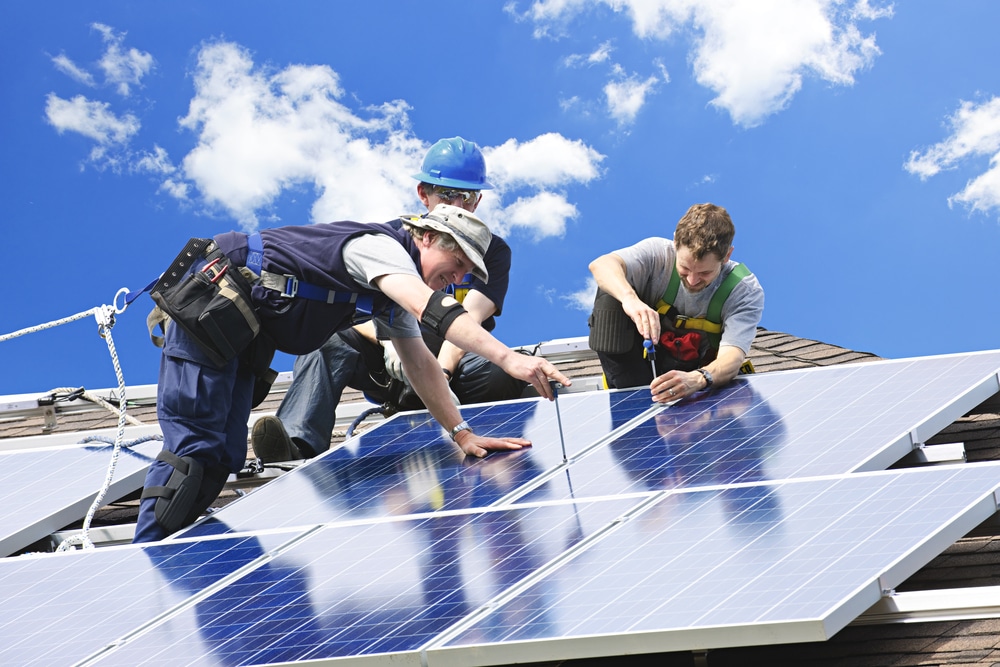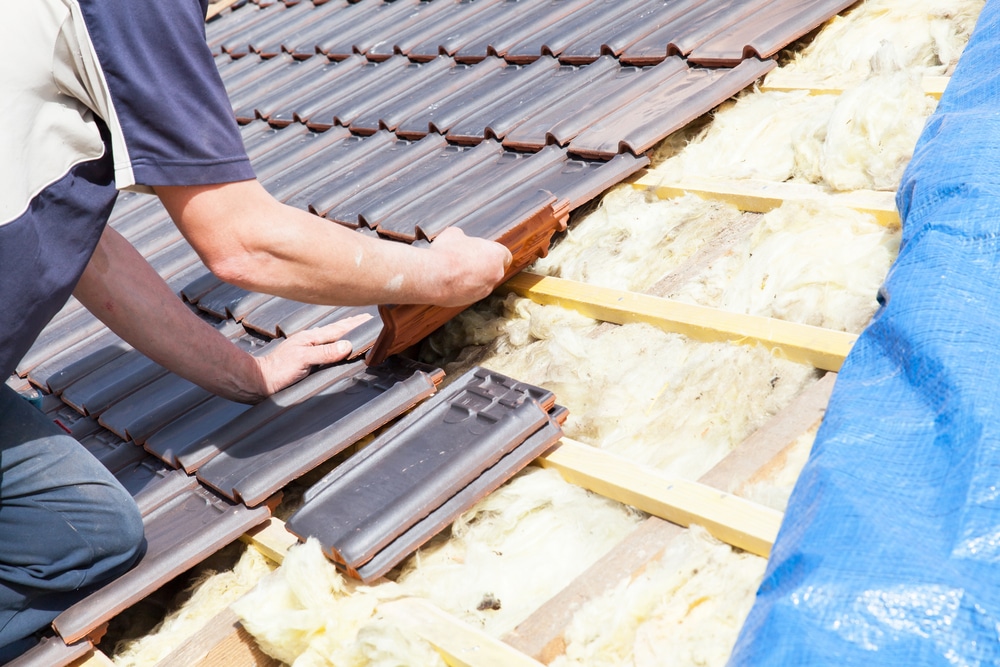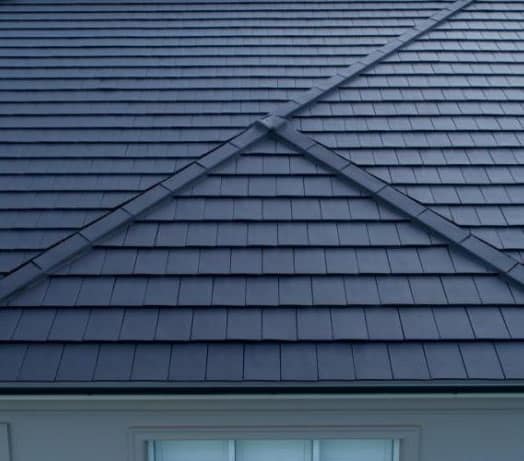Running a hot water line on top of the roof in Arizona presents several challenges. While it is possible to do this, there are certain considerations that must be taken into account before proceeding. This article will discuss the potential risks and benefits associated with running a hot water line on top of an Arizona rooftop. It will also provide insight into how best to execute such a task if desired.
The first step when considering whether or not to run a hot water line on top of one’s Arizona rooftop is to assess what type of environment the area receives. The climate in Arizona can vary greatly depending upon location and time of year, making it important for homeowners to consider environmental factors such as temperature fluctuations, humidity levels, wind speed and exposure to sun before attempting any kind of installation process.
Overview Of Roofs In Arizona
Arizona is a state known for its hot and dry climate. Roofs in the area must be able to withstand extreme temperatures, high winds, and potential damage from hail or other weather-related events. As such, roofing materials used in Arizona are generally more resilient than those found elsewhere. Commonly used materials include asphalt shingle roofs, metal roofs, clay tile roofs, wood shake roofs, and foam spray roof systems. Each type of roof has advantages and disadvantages that should be considered when making a decision on which material to use.
The most important factor when selecting a roofing material is whether it can adequately protect against the elements while also providing adequate energy efficiency. Different types of insulation may need to be installed depending on the area’s climate conditions. Additionally, local building codes should always be taken into consideration before installation begins. With proper care and maintenance, any type of roof chosen will last many years provided it is suited for Arizona’s harsh environment.

Potential Hazards Of Running A Hot Water Line On The Roof
In Arizona, running a hot water line on the roof can pose potential hazards due to extreme temperatures and weather conditions. Extreme heat in Arizona during summer months can cause pipes on the roof to overheat or even burst if not adequately insulated. Furthermore, strong winds are common in this region which can damage any exposed piping components that have been installed improperly. Additionally, there is an increased risk of lightning strikes when metal objects such as hot water lines are present on rooftops. If struck by lightning, these metal objects could become damaged and dangerous for anyone nearby.
Lastly, it is important to consider whether neighboring buildings may be negatively affected through radiation leakage from the hot water line should it come into close contact with other structures. It is essential to ensure that all safety precautions are taken before installing a hot water line on a rooftop in Arizona.
Best Placement For The Line
When considering the best placement for a hot water line on top of one’s roof in Arizona, it is important to keep certain factors in mind. These include the climate of the area and any applicable building codes or regulations. It may also be beneficial to utilize an experienced plumber when installing such a system.
In regard to climate, Arizona can have extreme heat during some months which could cause damage to pipes that are exposed directly to sunlight. Therefore, when designing the layout of a rooftop hot water line installation, consideration should be given as to how much direct sun exposure will be involved and what materials would work best in order to ensure longevity of the piping system. Additionally, local building codes must be taken into account before beginning construction; this includes obtaining necessary permits if required by law. Finally, consulting with a knowledgeable plumbing professional who has experience working with similar projects can help identify potential issues and provide guidance regarding compliant designs and proper installation techniques.
Building Code And Permit Requirements
In Arizona, the installation of a hot water line on top of a roof requires approval from local building authorities. Generally speaking, the permit application will be evaluated to determine if the proposed project is in accordance with applicable codes and regulations. Any deviations from these requirements must be justified before any permits can be issued.
The National Fire Protection Association (NFPA) has established standards for fire safety related to hot water systems. These include rules regarding distance between combustible materials and heat-producing appliances such as water heaters or pipes carrying hot liquids. Additionally, NFPA guidelines call for certain types of insulation around piping that carries heated fluids, which may also need to meet specific fire ratings depending on their location within the structure. Failure to comply with either state or national codes could result in costly fines or even legal action taken against those responsible for an unsafe setup.
Materials Needed For Installation
When installing a hot water line on top of the roof in Arizona, certain materials are necessary for the job. These include copper pipe or flexible tubing with appropriate fittings, solder and flux, insulation, and heat-resistant tape. Depending on the layout of the installation, additional tools may be needed such as pipe cutters, drill bits, pvc glue, and a variety of hand tools like wrenches and screwdrivers. To ensure that all parts are secure and safe against any potential damage caused by high temperatures or windy conditions, it is important to use weatherproof sealant when connecting pipes together. Additionally, using a gas meter will help determine if fuel lines have been properly sealed off during installation. Finally, checking local building codes before beginning can provide insight into which specific materials must be used to comply with regulations set in place by the region.

Step-By-Step Guide To Installing A Hot Water Line On The Roof
Installing a hot water line on the roof requires careful planning and preparation. Before beginning, it is important to assess whether running the hot water line through an attic or across the rooftop would be more practical for your particular home. If the latter option is chosen, then there are several items that must first be gathered in order to safely and successfully complete the project.
The necessary materials include a rubber hose, brass fittings, copper couplings, Teflon tape, pipe insulation, sheet metal screws, channel locks pliers, hacksaw blade or tubing cutter, soldering flux and solder. Additionally, protective gear such as safety glasses and gloves should also be worn during installation. After gathering all of these components together with adequate tools for assembly and measuring out the length of piping needed according to your specific plans for placement on the roof surface, you can begin laying down the primary lines for connection between pipes.
The next step involves attaching each fitting securely by threading them into place before soldering any connections around elbows or other areas where two pieces of pipe join together. Finally, after ensuring that no leaks exist within your newly installed system by testing with air pressure from a compressor or garden hose filled with water; wrap all exposed parts of piping in insulation and secure everything firmly with sheet metal screws so they remain stable while being subjected to outdoor elements like wind and rain.
Maintenance Tips
Running a hot water line on top of the roof in Arizona requires special considerations due to the extreme temperatures and potential for damage. In order to ensure that the system runs correctly and safely, it is important to take proper maintenance steps. Regular inspection of all components should be performed; this includes looking at insulation material around pipes, checking valves and pressure relief systems, as well as ensuring there are no leaks or other problems with the piping. Additionally, if any repairs are needed they should be completed immediately, using only materials specifically designed for use in an outdoor setting. Furthermore, regular cleaning of filters and screens is recommended to prevent clogging and reduce energy costs associated with running a hot water line on top of a roof in Arizona. Properly maintaining these systems will help them run efficiently throughout their lifetime.


